What is Tire Repair?
Tire repair refers to the process of replacing a faulty tire with a new one or simply repairing a tiny puncture. While it sounds like a job anyone with two hands can handle, it’s recommended to go to a shop that specializes in repairing tires to ensure that you get your problem solved completely.
Why You May Need Your Tire Repaired?
Years ago, car owners frequently dealt with the superfluous hassle of repairing their tires due to the quality. Thanks to the manufacturers and present day technology, tires are meant to withstand even the worst conditions on the road. While this holds much truth, it is not uncommon for people to find themselves needing to have their tire(s) repaired due to weather or other hazards on the road.
How Much Will A Tire Repair Run You?
While a tire repair won’t cost you an arm and a leg, it will cost you a bit of your time. If you’re looking into having a puncture repaired on a tire, you’re looking at spending on average between $10 to $20 dollars. The size of the puncture makes a huge difference and will determine the amount you will spend on getting your tire repaired.
Important Facts You Should Know About Tires
What Process is Used When Repairing a Tire?
A tire plug is exactly what it sounds like; a sticky expandable plug that is inserted into the puncture in hopes of keeping the injury secure long enough for the tire to re-inflate with air.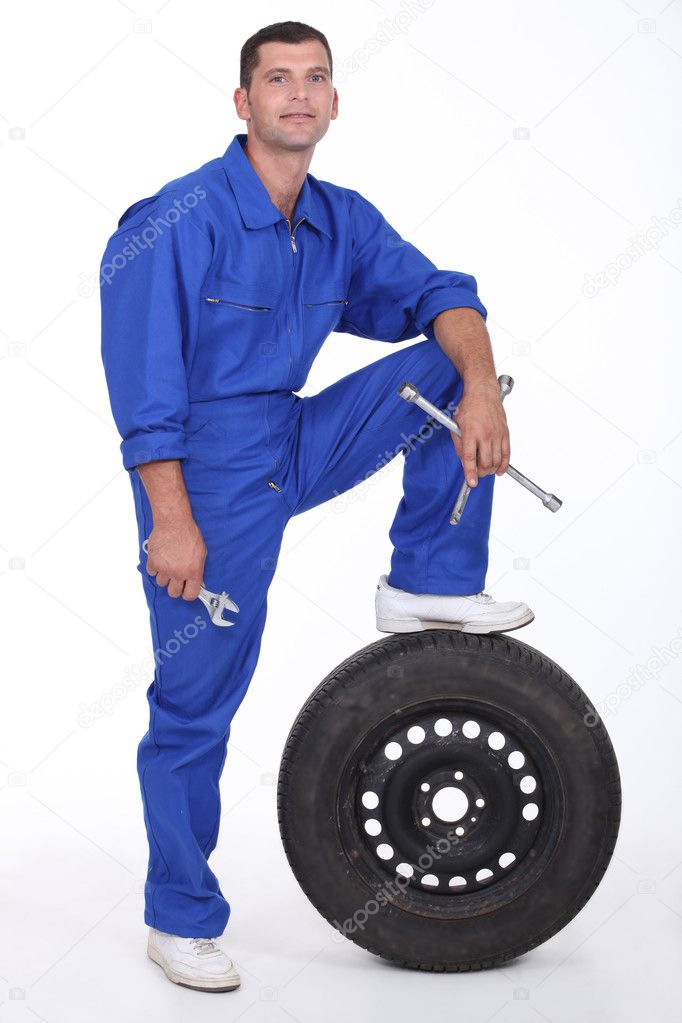 A patch is also pretty self-explanatory when it comes to description. Better known as a radial patch, this piece of material is used to seal up the damaged tire. Due to the heat caused by driving, the patch eventually melts into the tire completely erasing all notices of repair.
A patch is also pretty self-explanatory when it comes to description. Better known as a radial patch, this piece of material is used to seal up the damaged tire. Due to the heat caused by driving, the patch eventually melts into the tire completely erasing all notices of repair.
Most vehicles are equipped with a spare tire if you happen to be running on a flat. In some cases, you might have to go to your local car shop to purchase a tire depending on the circumstances.
The Difference Between a Plug and a Patch
While the plug takes less time and can be down without removing the entire tire in comparison to the plug, it’s more likely for a car owner to come back in a shorter amount of time for yet another repair after getting a plug opposed to a patch.
Sources:
http://www.tirereview.com/back-to-basics-1-basic-tire-repair/
https://www.carsdirect.com/car-repair/average-tire-puncture-repair-cost
http://txtire.com/blog/view/fixing-flat-tires-tire-plug-vs-radial-patch
Your Name (required)
Your Email (required)
Phone (required)
What is the best way to reach?
Phone
Email
Tire patches are a huge money maker for auto shops.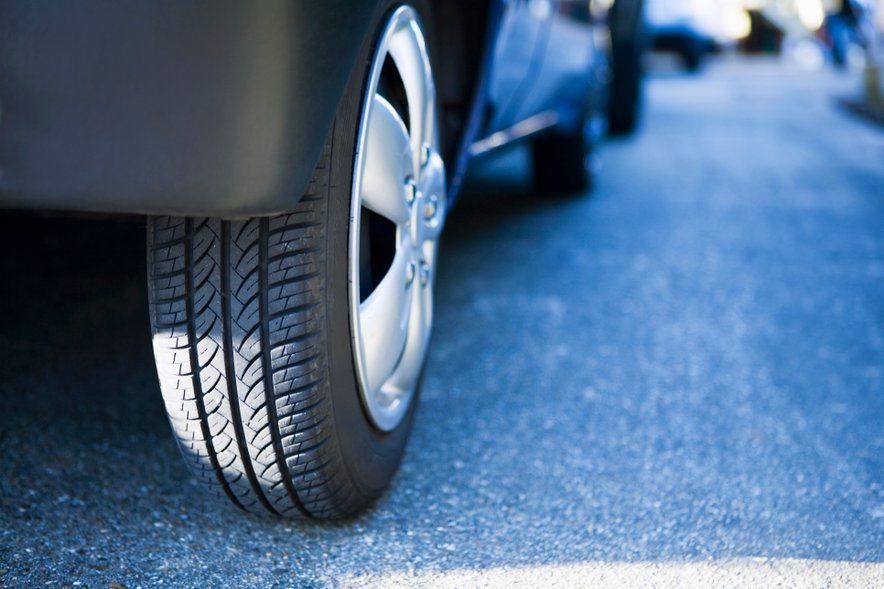 They don’t require much labor, and the cost of a patch is really low compared to most other auto parts.
They don’t require much labor, and the cost of a patch is really low compared to most other auto parts.
But what is a good price to pay to get a tire patched? Well, that depends. If you patch the tire yourself, expect to spend $6.00. If you take it to the shop, you’re looking at spending anywhere between $10-$40, depending on the situation.
Patching tires yourself is always everyone’s first instinct, since the cost is so low. But many people are deterred when they find out they can’t, due to any number of reasons. Deciding when to do it yourself, versus taking it to the shop is what we’ll explore in this article along with why tire patches can be so pricey. We’ll outline the different reasons you should, or shouldn’t do it yourself. We’ll also examine the different types of patches and the pros and cons of each.
I used to work at a shop on a main highway. Every day, during rush hour traffic, at least 3 customers came in requesting a tire patch. Over the years, I’ve learned the simplicity of the tire patch can be deceiving. Not all tires are created equal and the same goes for patches.
Not all tires are created equal and the same goes for patches.
When a shop patches your tire, most of the cost stems from the mechanic’s time.The wholesale price of a tire patch is less than $2.00. The glob of bead sealer that’s used to seal the patch costs less than $0.10.
But it takes the average mechanic about 15 minutes to patch a tire. Most shops charge around $120 per mechanic hour, so you’re looking at $30-$40 for time and parts. If you want the tire re-balanced, as is recommended, tack on another $13.00.
While a tire patch is among the most simple jobs, it takes time away from mechanics who could be working on higher paying, more demanding jobs. Hence, the hourly rate being applied to the job.
Not all tires can be repaired. There are some tests that mechanics, or you yourself, can perform. Doing these tests will give you a good idea as to whether or not your tire can be repaired.
When your tire becomes flat, the first thing to do is not drive on it. Driving on a flat tire, even for a short amount of time, can damage it beyond repair. When a tire is operated without air, the vehicle’s weight crushes the tire’s innards turning it to dust.
Driving on a flat tire, even for a short amount of time, can damage it beyond repair. When a tire is operated without air, the vehicle’s weight crushes the tire’s innards turning it to dust.
The next thing to do is see what caused the flat. Nails directly in the middle of the tread are a common occurrence. They can be easily spotted from a distance. If you can’t see it, running your hand around the tread will reveal the location of the nail.
Tire punctures that occur within 2 inches of the sidewall are considered non-repairable. This means neither you, nor the shop, can repair this.
It’s actually against the law for auto-shops to repair tires that have punctures close to the side wall. The issue is, tire patches placed close to the side-wall often result in tire blowouts, due to the shifting nature of a tire’s sidewall to tread relationship.
A good test to measure the distance between the puncture and the sidewall is to place your thumb in that space. If the puncture is a thumbs width (or more) away from the side wall, you’re in the clear.
If the puncture is a thumbs width (or more) away from the side wall, you’re in the clear.
If not, sadly, it’s time for a new tire.
The length of the puncture is the next thing to look at. Most nail punctures are just as wide as the nail itself. In this case, with the puncture being so small, it’s ok to plug the tire yourself. But if the length of the puncture is 2 ½ inches or more, you cannot patch it.
You cannot patch it, or a shop cannot either. Punctures this large are not repairable, because patches aren’t meant to hold in air over that big of an area.
The inner tire liner doesn’t become fully sealed, even with the largest patches available. If your puncture is more of a gash in the tread, it’s time for a new tire.
Fully patching a tire requires you to complete the following steps.

So as you can see, the full, official way to patch a tire is quite involved. This is why you can see prices up to $45.00 for a simple patch.
If the tire has to be rebalanced, that’s around $13.00 and if it needs new valve stems, or a TPMS sensor, this can also tack on extra costs.
This patch is so effective that it saves you from having to purchase a new tire. You can enjoy the full length of the tire as if no puncture ever happened. Patching a tire can be quite the life saver when you’re in a jam.
The obvious issue here is that tire machines aren’t commonplace in the average driver’s house. So doing it yourself this way isn’t really feasible, but the method we discuss next can be done almost anywhere.
Tire plugging is a simple fix applied to various types of tire punctures. The majority of tire punctures can be repaired by doing a plug yourself.
To plug a tire, just push the plugging strip with the T-Handle in as far as it will go. Then, with all your might, quickly pull the t-handle out. This will plug the tire, and all that’s left is for you to cut the excess plugging strip away.
Tire plugging is looked down by Tire Shops because they consider it not fully seal the surface. But I’ve plugged well over 500 tires, and have never had an issue. Most independent shops are fond of tire plugging as well, since it keeps prices down for them, and the customer.
Tire plugging can be done by yourself, in your driveway. If you don’t feel comfortable doing it, call up an independent shop and ask if they plug or patch tires. Most likely, they probably offer both, but they’ll charge half for a plug, compared to what they would for a full patch.
Plugging tires, while usually a simple task, can turn into a complex issue.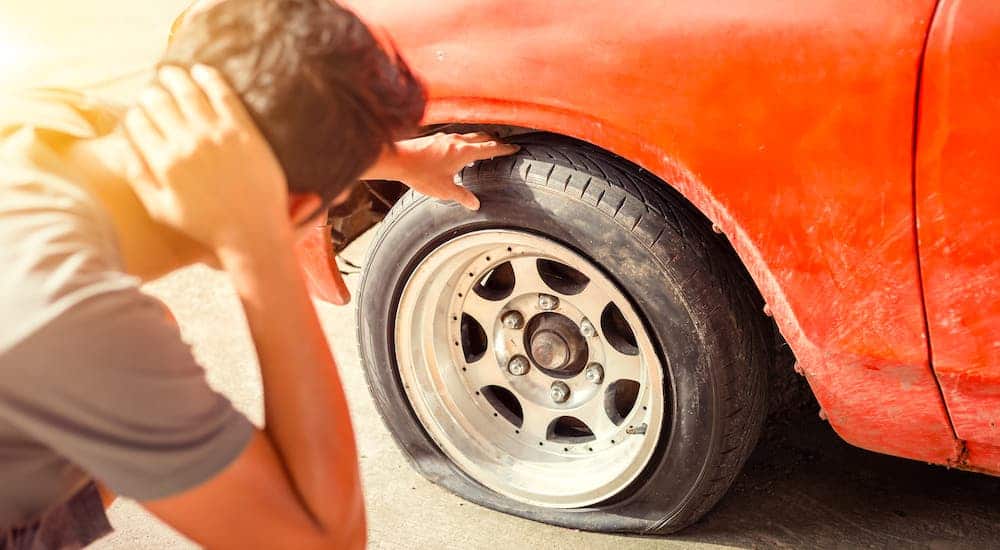 For example, if you plug a tire, and you can still hear a slow hissing noise, it can be a pain to hunt down the source of the leak.
For example, if you plug a tire, and you can still hear a slow hissing noise, it can be a pain to hunt down the source of the leak.
Or if you spray the whole tire down with soap in order to locate the leak, and can’t find it. You might start to question your sanity. Don’t! These issues can take up hours, even for master techs.
There’s actually a machine in some tire shops that puts the tire under water using a crane-like object from above. Even this machine still fails sometimes, and mechanics are left scratching their head. So if you start to encounter any issues of locating the leak, or plugging a leak, it’s time to take it to the shop.
If the tire is totally flat when you walk out to your car, you should be able to use your spare tire, and repair the issue at home with a plugging kit. But if you plug the tire, and it’s still leaking, take it to the shop and let them repair it.
If you are questioning the length test or edge test results, it’s also recommended that you take it to the shop. Some mechanics will say, “use double the amount of plugs”, to fix large gashes. This is wrong. If one plug can’t fix it, take it to the shop and see what you can recoup.
Some mechanics will say, “use double the amount of plugs”, to fix large gashes. This is wrong. If one plug can’t fix it, take it to the shop and see what you can recoup.
But for the majority of situations, where a nail has punctured your tread somewhere in the middle of the tread face, it’s totally acceptable to purchase a plug kit, and do the repair yourself. It will save you a couple bucks, and you will have had the opportunity to go under your car to do a quick visual inspection. Or take off the tire and glance at the brake pads.
esportby.com
An easy way to quickly restore tire tightness and continue your journey. True, for this you need to have the right wheel repair kit with you.
Maxim Stroker
“Catching” a nail, screw or piece of wire in a wheel on the track is a trifling matter and somewhere even everyday. However, it turns into a serious "trouble" if this happens, for example, at night or a couple of tens of kilometers from the nearest tire fitting point. In theory, in this case, you need to put a spare wheel and go further. Although, in the case of a family trip on vacation, the process of digging it out from under a pile of junk in the trunk can turn into an adventure that deserves a separate story. Be that as it may, often the trouble does not come alone and the spare tire can be broken literally on the next kilometer. After all, where one carnation fell on the road, there may well be another one, and another, and another ...
In theory, in this case, you need to put a spare wheel and go further. Although, in the case of a family trip on vacation, the process of digging it out from under a pile of junk in the trunk can turn into an adventure that deserves a separate story. Be that as it may, often the trouble does not come alone and the spare tire can be broken literally on the next kilometer. After all, where one carnation fell on the road, there may well be another one, and another, and another ...
With a couple of crippled wheels, you'll either have to wait an unknown amount of time for a tow truck to be sent in, or fix it yourself. Therefore, in a not particularly urbanized area, it makes sense to carry a repair kit with you to eliminate punctures in tubeless wheels. In principle, it can be of any manufacturer. The main thing when choosing it in the store is to make sure that the “drill” included in the repair kit is not very toothy and sharp. After all, his task is simply to clear a puncture hole in the tire, and not to break its metal cord. The second recommendation: the flagella, which are supposed to close the puncture hole, should be plump and reinforced with thin wire or plastic threads.
The second recommendation: the flagella, which are supposed to close the puncture hole, should be plump and reinforced with thin wire or plastic threads.
n-i.kiev.ua
And the third criterion for choosing a wheel repair kit is the obligatory presence of a tube of glue in it. Yes, yes: there are also “glueless” sets on sale, which are essentially useless.
So, we notice that the wheel is flattened (or has already blown off) and proceed to eliminate the problem. Most often, the hole in the rubber is not visible. Therefore, to begin with, we hang out the damaged wheel by raising the car on a jack, and inflate it with a pump or compressor to 3-4 atmospheres. If even after that it is not possible to detect damage by the whistle of escaping air, we methodically and consistently wet the entire surface of the wheel and look for bubbles at the puncture site.
Having found a puncture, we take the “drill” from the set and pierce the damaged area with it several times.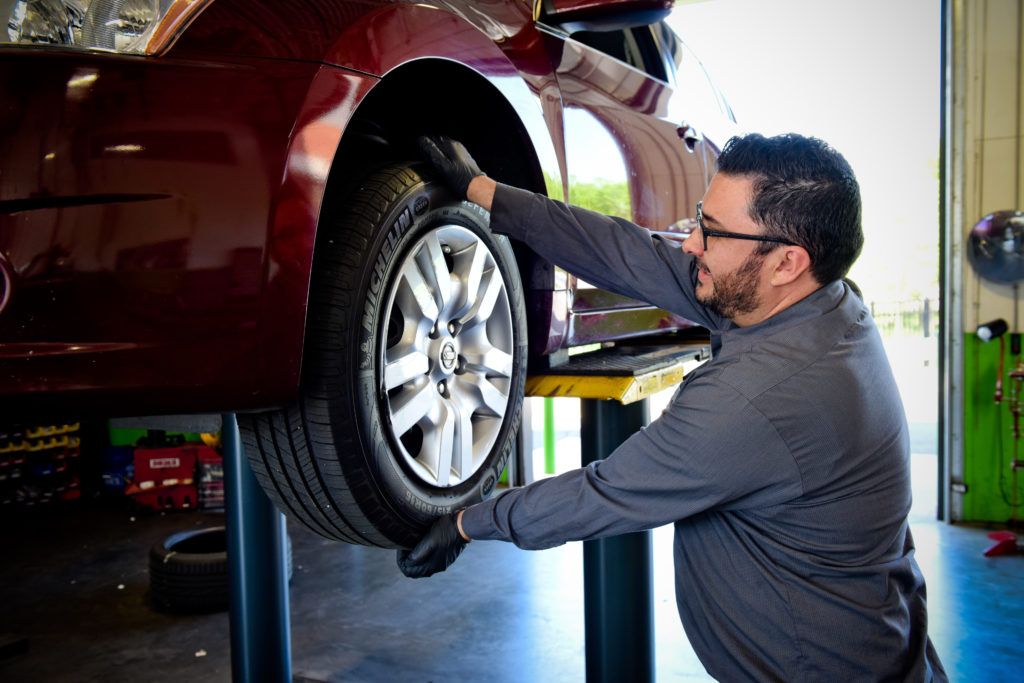 So we clean the surface of the hole before gluing. Next, we smear the “drill” with glue from the set and again immerse it in the hole. We repeat this operation and, leaving the “drill” sticking out in the hole smeared with glue, we take out the flagellum and insert it halfway into the eye of another tool - the “overgrown needle” (sometimes called the “awl”), also available in the repair kit. We coat the flagellum with glue and, quickly pulling the “drill” out of the hole, insert our “needle” there so that the ends of the flagellum remain above the surface of the wheel tread. Next, we pull out the “needle-awl” and wait a few minutes until the glue grabs. After that, we pump up the wheel and carefully cut off the protruding tails of the flagellum with a knife. Everyone, you can move on.
So we clean the surface of the hole before gluing. Next, we smear the “drill” with glue from the set and again immerse it in the hole. We repeat this operation and, leaving the “drill” sticking out in the hole smeared with glue, we take out the flagellum and insert it halfway into the eye of another tool - the “overgrown needle” (sometimes called the “awl”), also available in the repair kit. We coat the flagellum with glue and, quickly pulling the “drill” out of the hole, insert our “needle” there so that the ends of the flagellum remain above the surface of the wheel tread. Next, we pull out the “needle-awl” and wait a few minutes until the glue grabs. After that, we pump up the wheel and carefully cut off the protruding tails of the flagellum with a knife. Everyone, you can move on.
Test drive of one of the best family minibuses
19809
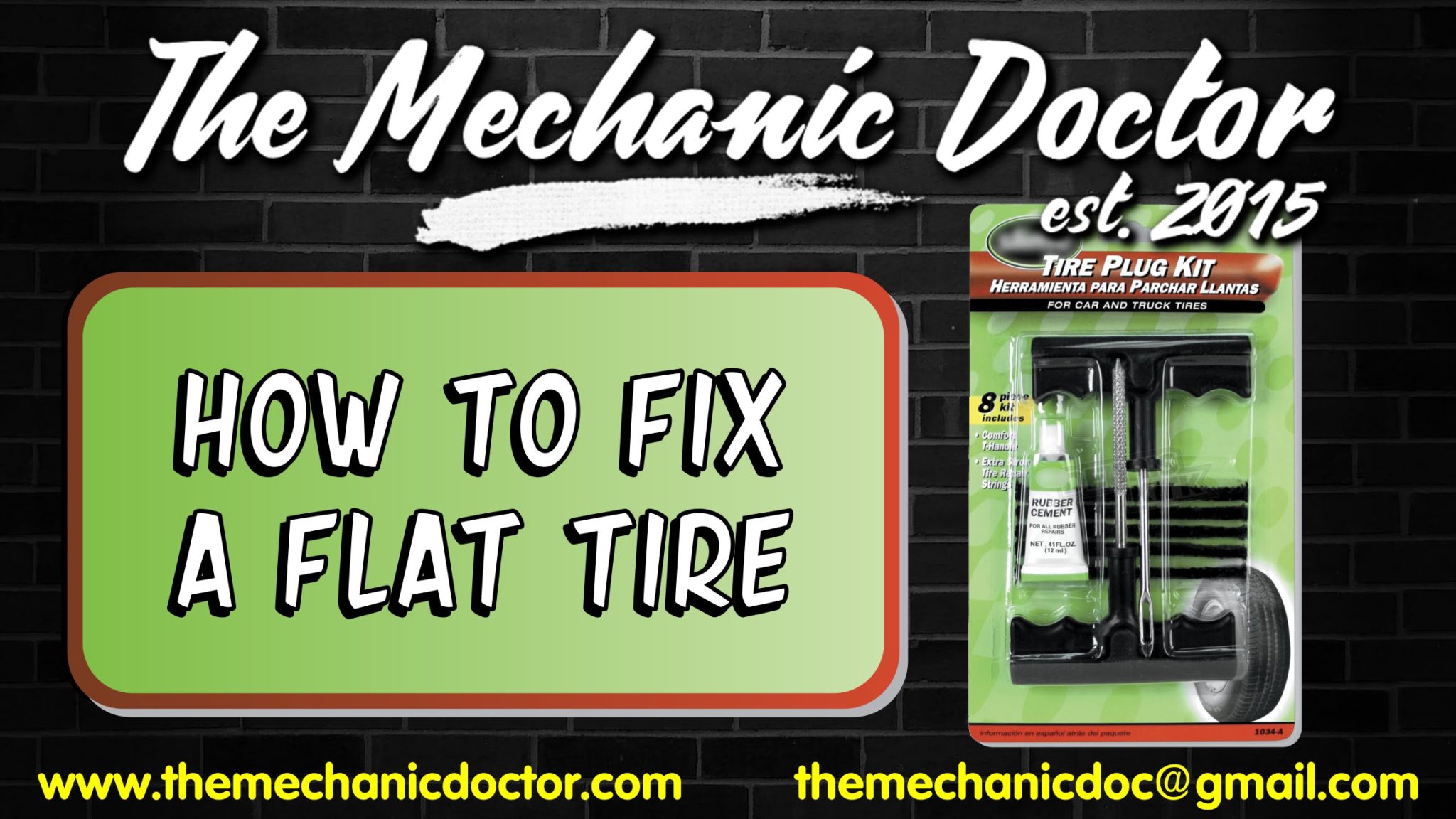 Zen
Zen wheels, summer tires, cheap cars, repairs, tires, winter tires, track
You hit: the tire is flat, but there is no spare tire. Modern tires are tubeless - if you managed to block a small leak with a sealing compound, pouring it into the valve, you can not look for a puncture. Effectively - plug the hole with a rubber band. It is injected from the outside with a special device (such kits are inexpensive on the market). But now we are talking about an extreme case - when a careless driver has nothing at hand to quickly repair a puncture.
The technique is not new, but effective: we move the tire bead using the weight of the car and the force of the jack.
The technique is not new, but effective: we move the bead of the tire using the weight of the car and the force of the jack.
A small hole can be plugged by screwing a self-tapping screw into it. You can take it, for example, from the trunk lining. Another option, if the puncture is small: pour half a liter of water into the tire (with a pump through the valve) so that it slows down the air outlet. But periodically you will have to pump up the wheel.
You can take it, for example, from the trunk lining. Another option, if the puncture is small: pour half a liter of water into the tire (with a pump through the valve) so that it slows down the air outlet. But periodically you will have to pump up the wheel.
Approximately ten cubes of gasoline, a torch, an explosion - and the board sits still!
Approximately ten cubes of gasoline, a torch, an explosion - and the board sits still!
To seal a large hole, the tire will have to be removed from the rim, at least on one side. But first, move both tire beads deep into the rim groove. Experienced people carry a piece of steel angle and a heavy hammer for such a case. Or they move it with a jack, resting its heel against the sidewall of the tire, and the shelf against the threshold of the car. Next, installers need to drag the desired bead over the rim flange, and only after that you can take on repair fungi, glue and patches.
The puncture has been repaired - but how to return the tire to the rim shelves? Not everyone has a high-performance electric compressor with them. And in order to use a conventional pump, you will have to seal the gaps as much as possible - for example, pull the tire around the circumference with ropes. If the sides hit the hump and the pressure began to rise, the problem is solved. In practice, these methods require manual dexterity. It's easier to land the tire with a light blast. This requires 10–15 g of gasoline. Pour a few milliliters of fuel inside the tire, then, so that it evaporates better, we roll the wheel. We put it on its side and, pressing on the sidewall, bring the flame to the gap. But not a match, but a torch! There will be a pop - and the tire is in place. A typical mistake is to pour too much gasoline: instead of popping, a fire will break out. We extinguish, we air ...
“Inflate” the tire with a watering hose.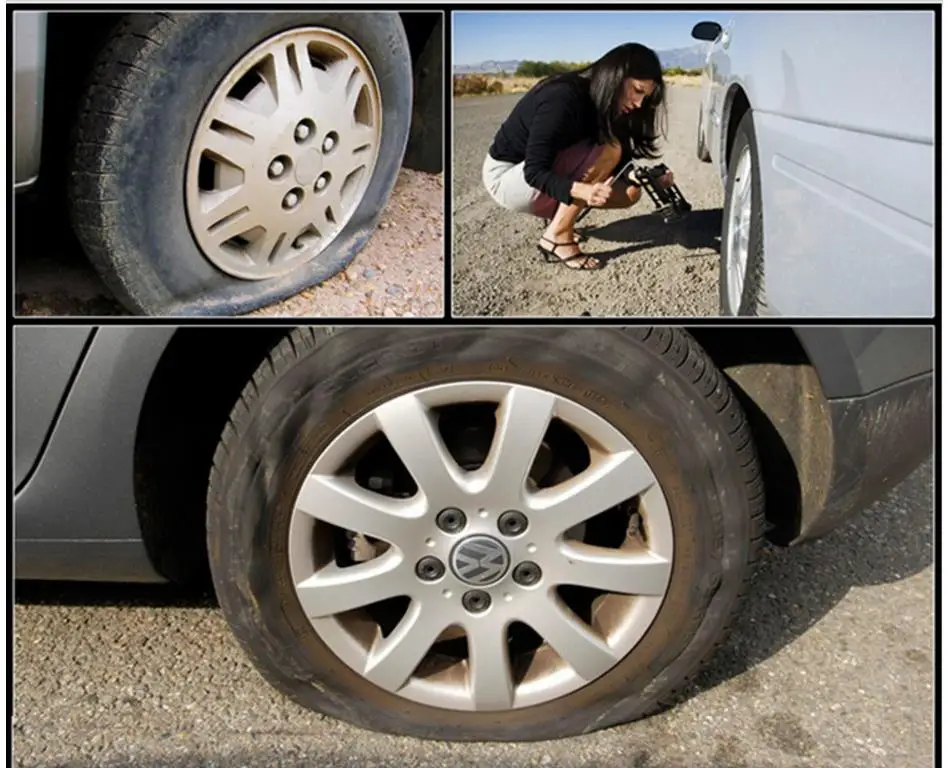 The matter requires patience, but on such a wheel you will reach the place of repair.
The matter requires patience, but on such a wheel you will reach the place of repair.
"Inflate" the tire with a garden hose. The matter requires patience, but on such a wheel you will reach the place of repair.
When the hole is in the knuckle, the tire cannot be saved. Unless you insert a camera into the tire. From the inside, it is useful to cover the hole with a "coat" of a couple of layers of rubber or with a bandage cut from the sidewall of a tire lying on the side of the road - there is a lot of this goodness along the roads. This will protect the chamber from sand and reduce the chance of further tearing. And if it's not far from the purpose of the trip? On a flat tire, you can drive 15–20 km on asphalt at speeds up to 40 km/h before it finally falls apart. We talked about this experiment in ZR, 2009, No. 7.
But what if there is no camera? Then turn on the fantasy. Someone "fills" the tire with a watering hose; all sorts of rags, sponge rubber from old seats, plastic film, linoleum strips, sidewalls cut from old tires, etc.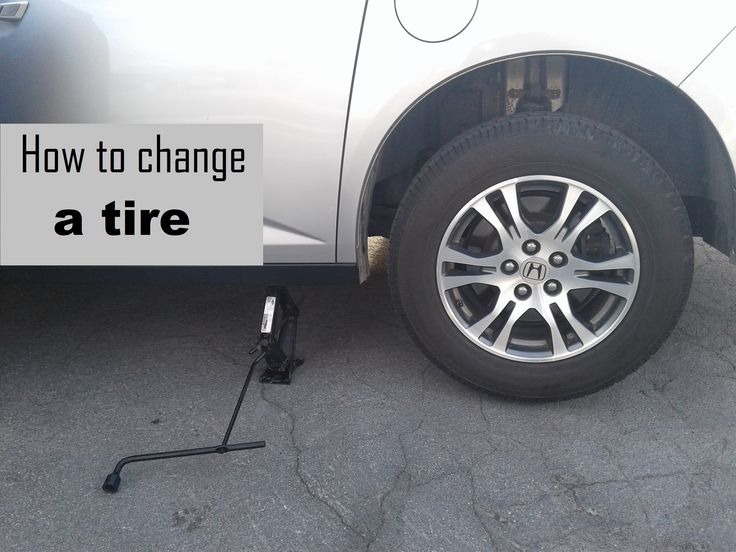 will be used. With such stuffing, tires will wrinkle less on the go. But forget about driving in normal mode - slowly, extremely carefully, we drive to the nearest tire shop.
will be used. With such stuffing, tires will wrinkle less on the go. But forget about driving in normal mode - slowly, extremely carefully, we drive to the nearest tire shop.
Travel set: wedges, jack, pry bars, wheel wrench, hammer, gloves, corners, compressor. Do not forget repair fungi, self-vulcanizing patches and, of course, a valve cap with a head that is used to unscrew the spool. There are usually no such caps on the wheels of modern cars, but if you look, it may come in handy.
Travel set: stop wedges, jack, pry bars, wheel wrench, hammer, gloves, corners, compressor. Do not forget repair fungi, self-vulcanizing patches and, of course, a valve cap with a head that is used to unscrew the spool. There are usually no such caps on the wheels of modern cars, but if you look, it may come in handy.
CARE OF THE WHEELS, RULES OF DISMANTLING AND ASSEMBLY
— Not all tire damage can be repaired without loss of its qualities.